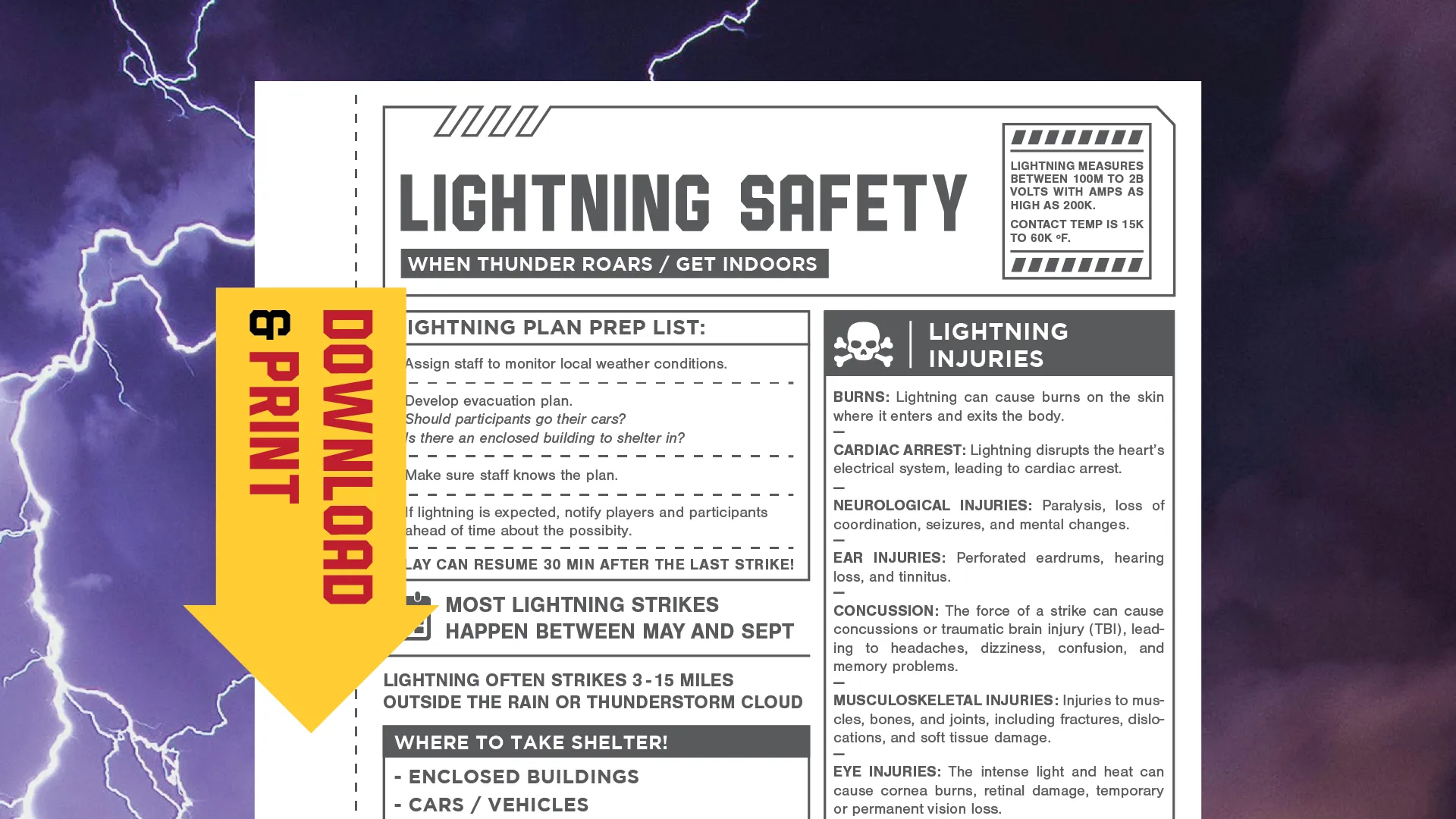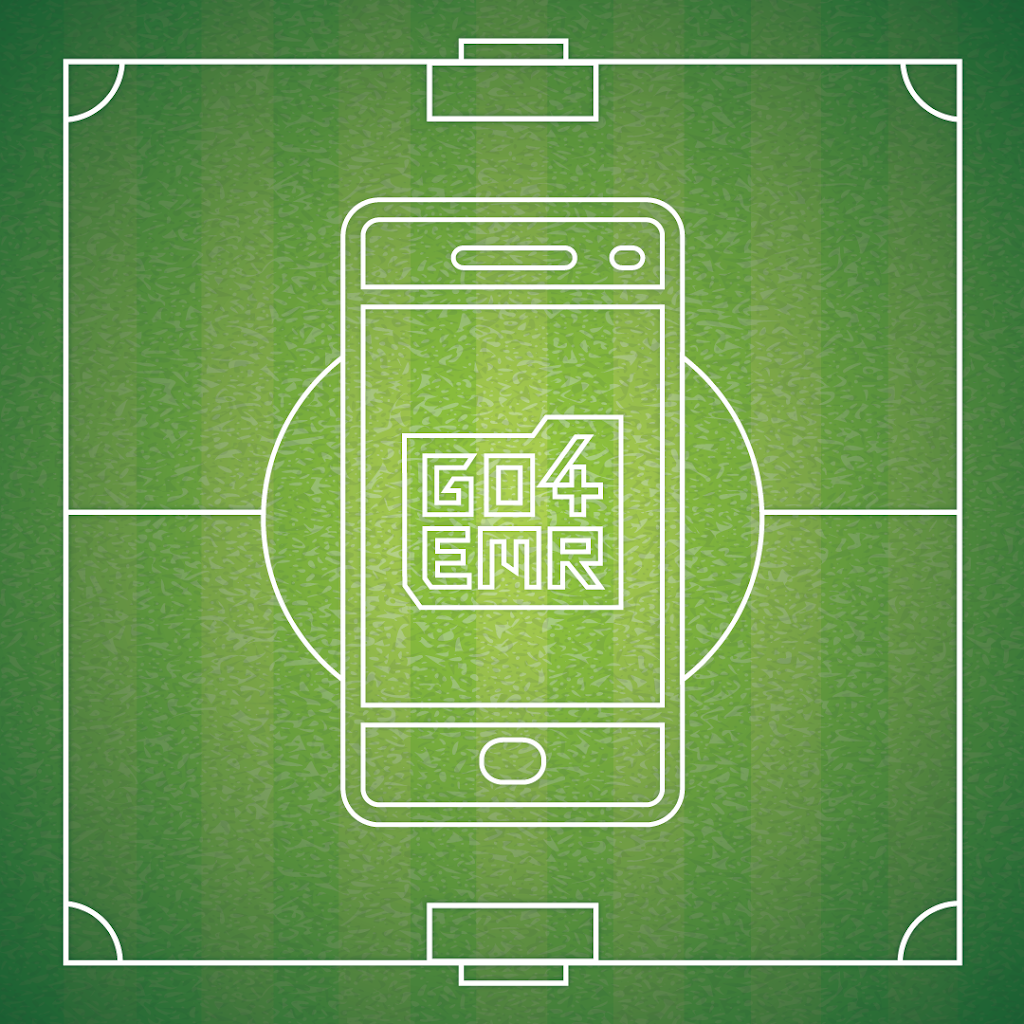What you need to know about lightning

Lightning strikes fast, turning a sunny afternoon into a dangerous situation. Here’s what you need to know about lightning safety:
Get your Lightning Safety Action Plan HERE.
Make a Plan:
Game, practice, a camp, or tournament, you need a venue specific lightning safety plan that includes:
- A weather monitoring system: Continuously track forecasts and utilize real-time weather monitoring tools such as Weather Sentry or Perry Weather that will show you how far away lightning strikes are occurring.
- Designated Safe Shelters: Identify sturdy, enclosed buildings (not dugouts or bleachers) within a short distance of the field. Work with your athletic trainer to include these shelters in the Emergency Action Plan that all participants and staff should have access to.
- Communication Strategy: Establish clear communication protocols to inform participants and spectators of an evacuation and the location of safe shelters. As a tournament operator, this means preemptively drafting emails and text messages that can be triggered rapidly in the event of weather.
When the Storm Approaches:
- Suspend Play Immediately: The golden rule: “If you see lightning, flee the playing field. If you hear thunder, seek shelter immediately.” This is not optional, and you are responsible for communicating and clearing fields.
- Direct Everyone to Designated Shelters: Announce the evacuation clearly and ensure everyone knows where to go. Again, this should be included in your EAP so that everyone knows where to go before a weather emergency.
- Wait for the All-Clear: Don’t resume play until the athletic trainer in charge of your event has given the “all-clear.” Typically, this will be 30-minutes after the last strike that is within 10 miles of your event.
- Remember: There is no safe place outdoors during a thunderstorm. By prioritizing preparation and clear communication, you can keep your staff and participants safe.
5 Lightning Myths:
“Don’t worry, lightning only strikes the tallest object around.”
False! Lightning is looking for the path of least resistance, which may be tall objects, but not exclusively, especially if there is a good conductor just a pit lower.
—
“We’re good, there’s no rain or clouds in sight.”
False! Lightning travels, and can travel up to several miles away from the rain or storm clouds.
—
“A car’s rubber tires will protect you from lightning.”
False! You’re still safer there. It is actually the car’s enclosed metal shell that will protect you even if it conducts electricity.
—
Don’t touch someone if they’re struck by lightning, they may be electrified.”
False! The electricity from lightning does not stay in the body, and if someone is struck, they need immediate medical attention.
—
“Lightning never strikes the same place twice.”
False! This one is simply an old wives tale, and tall structures like the Empire State Building get hit by lightning multiple times per year.
Now that you know the safety protocols and myths surrounding lightning, get your Lightning Safety Action Plan HERE.
Are you an Athletic Trainer?
Join us!
From per diem shifts to full-time opportunities, AT resources, PLI, a free EMR and more, Go4 is the essential AT app. Sign up now!
"*" indicates required fields
Other articles you might like

What’s the deal with Standing Orders?
How do I get standing orders as an athletic trainer? Q: What are standing orders? A: Standing orders, aka medical protocols, establish the scope of practice for an athletic trainer. Under the direction of a physician, they are an overview of the specific skills that the AT is legally able…

AT Spotlight: Thomas Obergefell, Athletic Training from the Dugout
Name: Thomas Obergefell, MS, ATC, LAT Nickname: T.J. Alma…

Middle School / High School / College / Any School EMR – The Importance of Documentation
Go4’s in-app Electronic Medical Record We all know the reasons why it’s important to thoroughly document, but incase you forgot, here they are:…